This is a continuation of testing of the following macro lenses :
- Sony 90mm f/2.8 FE Macro
- Leica 100mm f/2.8 Apo Macro-Elmarit-R
- Zeiss 100mm f/2 Makro-Planar ZF
- Nikon 105mm f/2.8 Micro-Nikkor G VR
The test starts here:
The first series of tests is aimed at determining focus shift and longitudinal chromatic aberration (LoCA) at 1:2 (half size on the sensor), See this page for the test protocol:
The Sony 90mm f/2.8 FE macro debuted last year to rave reviews. It uses internal focusing, and had a focusing ring that is slid back and forth to invoke autofocus or manual focusing. It has a 270-degree focusing ring throw, which is marginal for accurate manual focusing. It has optical stabilization, and a handy focus lock button on the front of the barrel.
Let’s look at LoCA first. At f/2.8:
The vertical axis is MTF50, measured in cycles per picture height (cy/ph). The horizontal axis is camera position shift in mm. The points on the left side of the graph are with the camera farther away from the subject than the points on the right. I used a 50 um (0.05 mm) step size. The three raw channels are plotted. Three things are apparent:
The blue and green channel peaks occur at identical distances.
The red channel peak occurs farther away from the subject — the very definition of LoCA — but the difference is well under 1 mm.
The sharpness obtainable, as measured by the height of the peaks, in outstanding.
At f/4:
The lens get sharper, but little else changes.
At f/5.6:
Not quite as sharp. The LoCA remains low.
At f/8:
The depth of field is starting to swamp out the LoCA.
At f/11:
The LoCA is inconsequential.
Now we’ll regraph the same data in order to show focus shift.
In the red channel:
This is astounding. Focus shift is essentially nonexistent.
In the green channel:
Same idea.
In the blue channel:
Now we can see a tiny bit more focus shift.
I am very impressed.
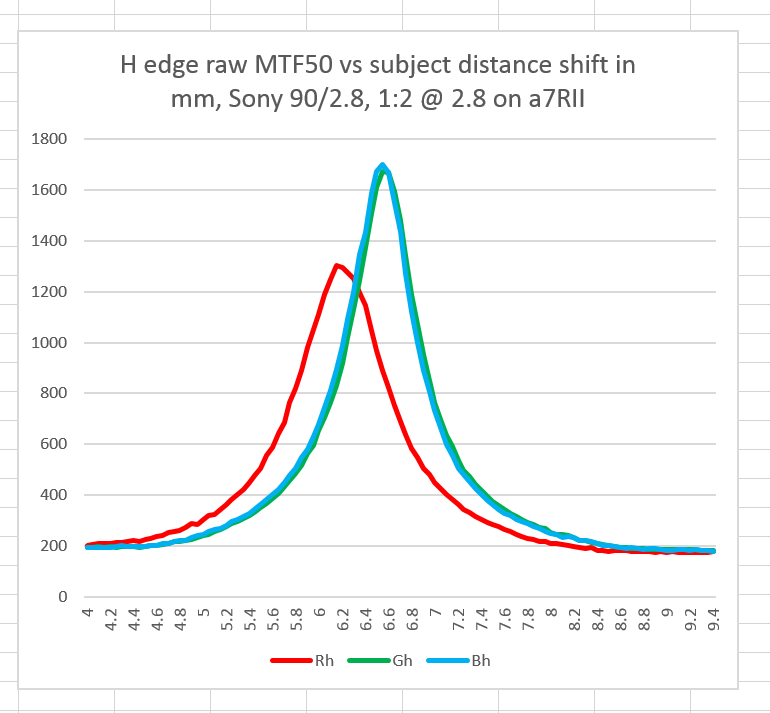

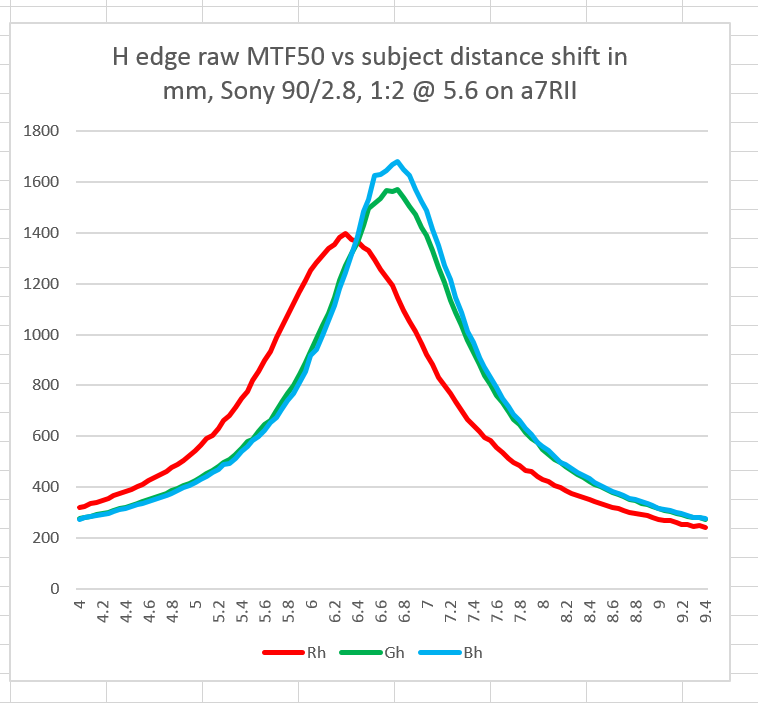
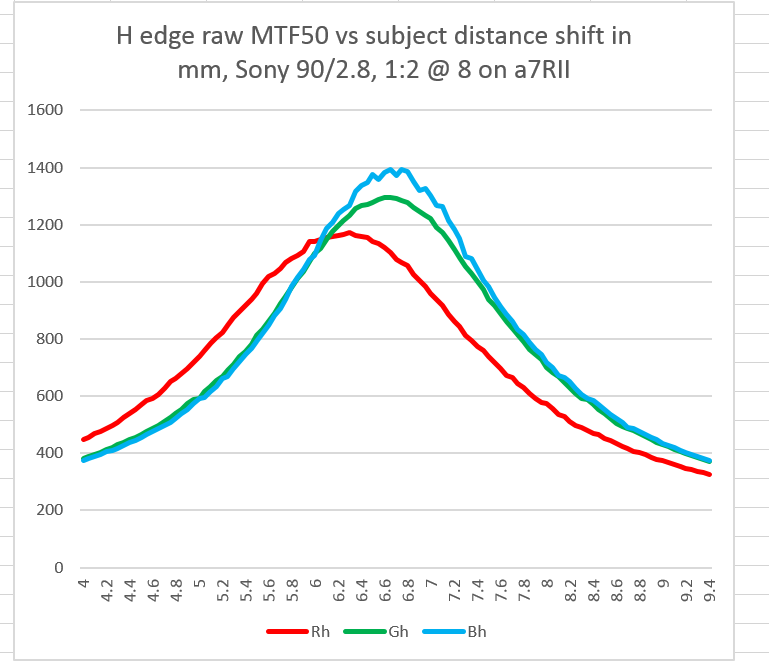
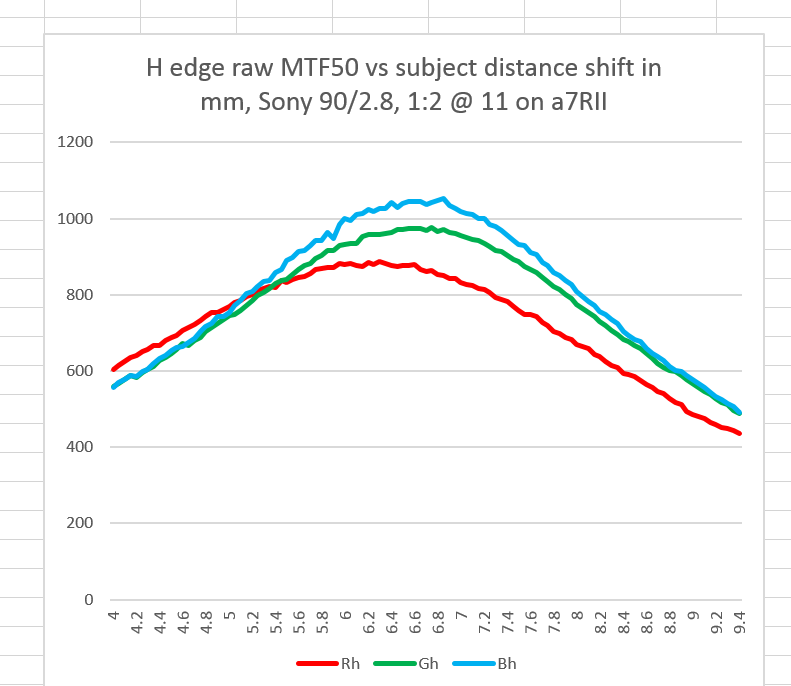
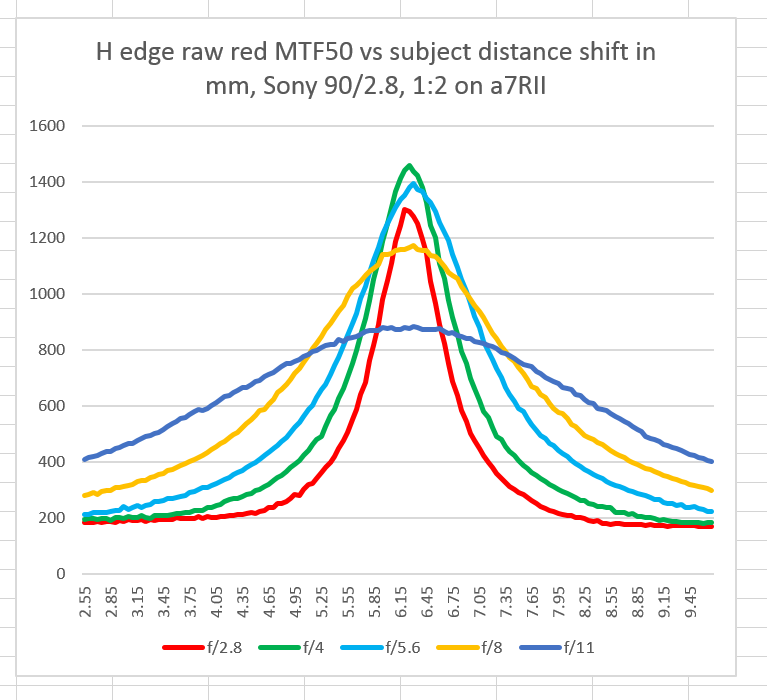
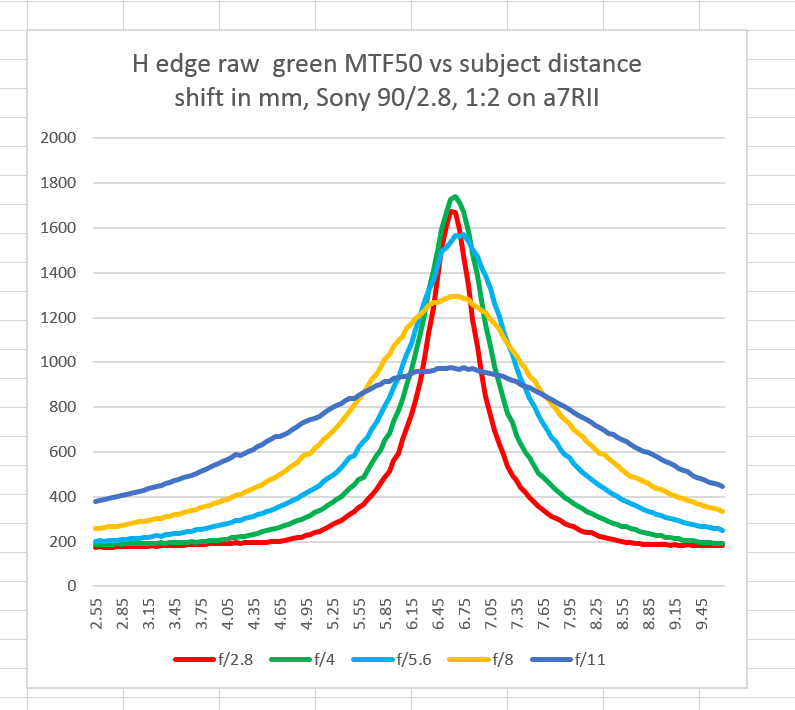
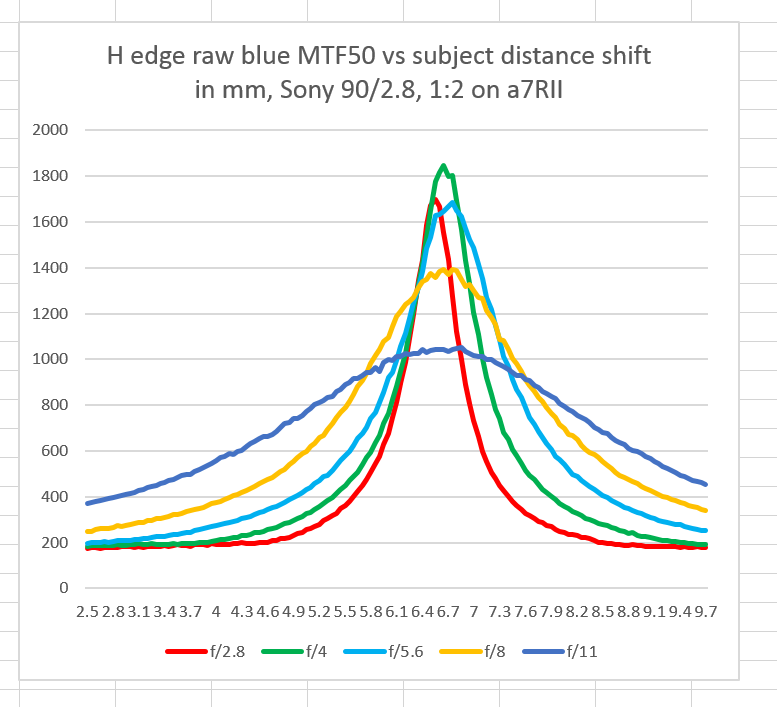
Jim, where might I find out more about the software and gear (if any) required for making a test such as you have shown here? Thanks you.
Here’s the company that made the rail and the controller:
https://www.cognisys-inc.com/
For analysis software, I’m using MTF Mapper, DCRAW, and a Matlab script that Jack Hogan wrote — and that I’ve heavily modified — to drive both of them I use Excel for the final calculations and the graphing.
Jim
so AF-precision-wise among the native lenses witin 80-90mm range FE90/2.8 beats both Batis 85/1.8 and FE85/1.4GM in a focus wide open/shot stopped down scenarios…
This test does not measure autofocusing performance. Note also that the test was done at 1:2 magnification. Neither of the other lenses you mention can focus that close.
I notice that the f/11 DOF is very different…picking the blue channel and 600 LP/PH thresholds, the Sony has ~4.5mm, the Zeiss ~3.8mm, and the Leica ~3.5mm.
Is this the focal lengths of the lenses changing relative to one another at close focus?
In the case of the Sony, certainly.
Hi Jim,
You write:
“The peaks are a bit broader, indicating that there is more depth of field at f/4 than f/2.8; no surprise there. There is slightly more LoCA than at f/2.8, as measured by the spread. This is in contrast to the conventional wisdom that LoCA decreases upon stopping down, but is consistent with what I have measured in the past, albeit at greater camera/subject distances.”
What I think we see is that LoCA is relatively independent of aperture. But, stopping down increases DoF and also reduces peak sharpness. So, the visible effect of LoCA is reduced stopping down. So, your observations and conventional wisdom don’t actually contradict but just represent different points of view on the same issue.
Best regards
Erik
Erik, we agree on the facts, and the reason why you can’t see LoCA if you stop down far enough. However, I have encountered people time after time who say that the effect itself diminishes when you stop down. That may be true in some cases — we’ve seen it in this testing — but it is the exception rather than the rule.
Looks much better than the longer distance results from your medium tele test. Seems to be a macro lens optimized for macro – not a given these days, especially in this focal length range where the macro lenses are often used for portrait and general photography.